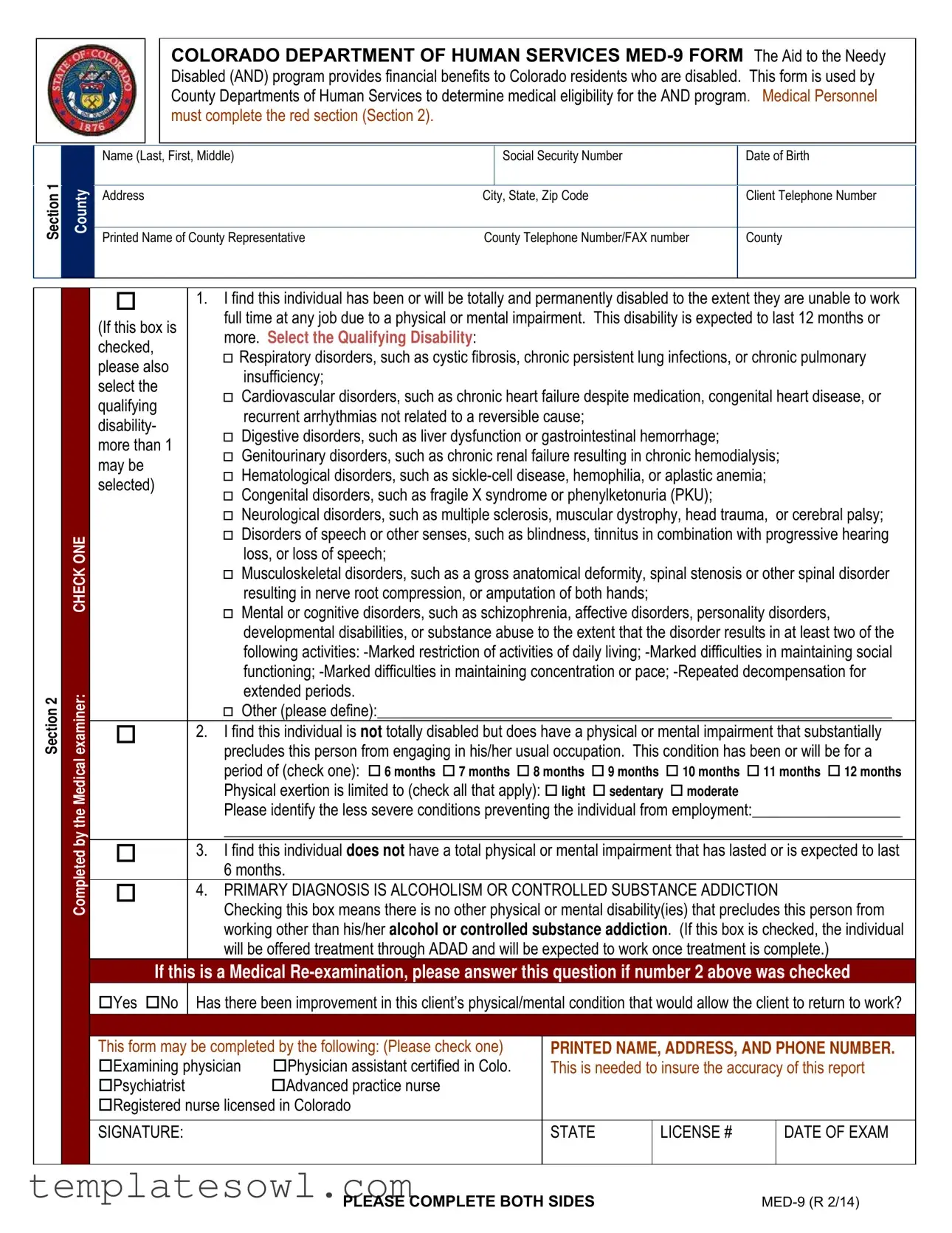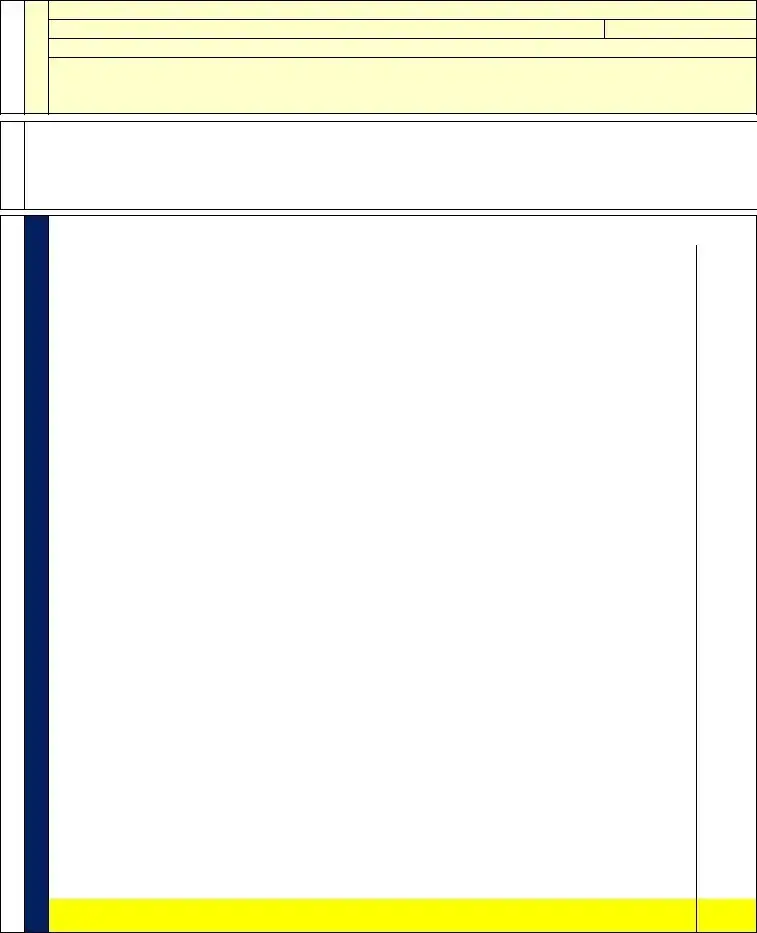|
|
1. I find this individual has been or will be totally and permanently disabled to the extent they are unable to work |
|
(If this box is |
full time at any job due to a physical or mental impairment. This disability is expected to last 12 months or |
|
more. Select the Qualifying Disability: |
|
|
|
|
checked, |
|
|
|
|
|
Respiratory disorders, such as cystic fibrosis, chronic persistent lung infections, or chronic pulmonary |
|
please also |
|
|
|
insufficiency; |
|
|
|
|
select the |
|
|
|
|
|
|
|
|
Cardiovascular disorders, such as chronic heart failure despite medication, congenital heart disease, or |
|
qualifying |
|
|
|
|
recurrent arrhythmias not related to a reversible cause; |
|
|
|
disability- |
|
|
|
|
|
|
|
Digestive disorders, such as liver dysfunction or gastrointestinal hemorrhage; |
|
|
more than 1 |
|
|
|
|
|
Genitourinary disorders, such as chronic renal failure resulting in chronic hemodialysis; |
|
may be |
|
|
|
|
Hematological disorders, such as sickle-cell disease, hemophilia, or aplastic anemia; |
|
|
selected) |
|
|
|
|
|
Congenital disorders, such as fragile X syndrome or phenylketonuria (PKU); |
|
|
|
|
|
|
|
Neurological disorders, such as multiple sclerosis, muscular dystrophy, head trauma, |
or cerebral palsy; |
|
|
Disorders of speech or other senses, such as blindness, tinnitus in combination with progressive hearing |
|
|
|
|
loss, or loss of speech; |
|
|
|
|
|
Musculoskeletal disorders, such as a gross anatomical deformity, spinal stenosis or other spinal disorder |
|
|
|
|
resulting in nerve root compression, or amputation of both hands; |
|
|
|
|
Mental or cognitive disorders, such as schizophrenia, affective disorders, personality disorders, |
|
|
|
|
developmental disabilities, or substance abuse to the extent that the disorder results in at least two of the |
|
|
|
|
following activities: -Marked restriction of activities of daily living; -Marked difficulties in maintaining social |
|
|
|
|
functioning; -Marked difficulties in maintaining concentration or pace; -Repeated decompensation for |
|
|
|
|
extended periods. |
|
|
|
|
|
Other (please define):__________________________________________________________________ |
|
|
2. I find this individual is not totally disabled but does have a physical or mental impairment that substantially |
|
|
precludes this person from engaging in his/her usual occupation. This condition has been or will be for a |
|
|
period of (check one): 6 months 7 months 8 months 9 months 10 months 11 months 12 months |
|
|
Physical exertion is limited to (check all that apply): light sedentary moderate |
|
|
|
Please identify the less severe conditions preventing the individual from employment:___________________ |
|
|
_______________________________________________________________________________________ |
|
|
3. I find this individual does not have a total physical or mental impairment that has lasted or is expected to last |
|
|
6 months. |
|
|
|
|
|
4. PRIMARY DIAGNOSIS IS ALCOHOLISM OR CONTROLLED SUBSTANCE ADDICTION |
|
|
Checking this box means there is no other physical or mental disability(ies) that precludes this person from |
|
|
working other than his/her alcohol or controlled substance addiction. (If this box is checked, the individual |
|
|
will be offered treatment through ADAD and will be expected to work once treatment is complete.) |
|
If this is a Medical Re-examination, please answer this question if number 2 above was checked |
|
Yes No |
Has there been improvement in this client’s physical/mental condition that would allow the client to return to work? |
|
|
|
|
|
|
This form may be completed by the following: (Please check one) |
PRINTED NAME, ADDRESS, AND PHONE NUMBER. |
|
Examining physician |
Physician assistant certified in Colo. |
This is needed to insure the accuracy of this report |
|
Psychiatrist |
|
|
Advanced practice nurse |
|
|
|
|
Registered nurse licensed in Colorado |
|
|
|
|
|
|
|
|
|
|
|
|
SIGNATURE: |
|
|
|
STATE |
LICENSE # |
DATE OF EXAM |
|
|
|
|
|
|
|
|


